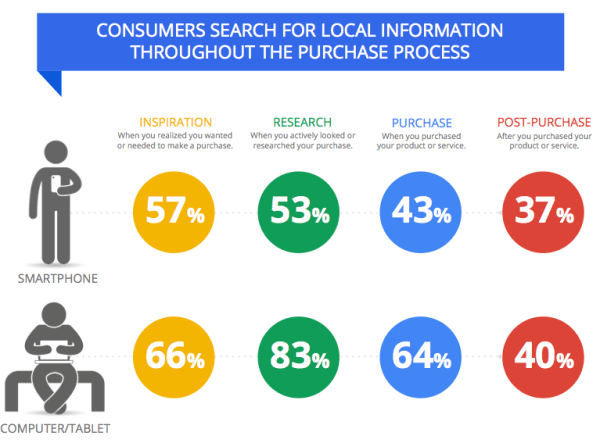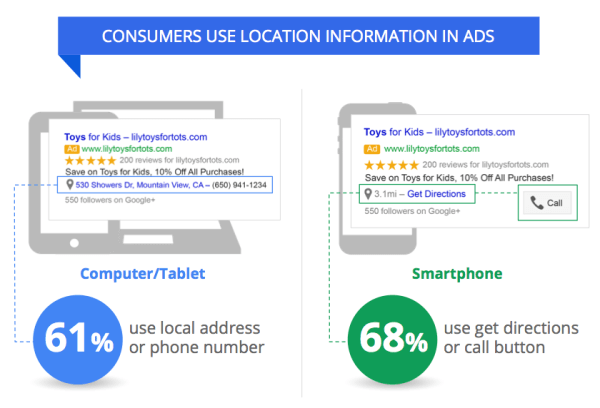Research: 56 Percent Of “On The Go” Searches Have Local Intent
ComScore recently found that 78 percent of local-mobile searches resulted in an offline purchase (usually in a few hours). New consumer data from research firm Ipsos MediaCT (sponsored by Google) echo most of the comScore study data, underscoring the critical nature of local information to mobile users. Ipsos conducted the online survey of 4,500 consumers across […]

ComScore recently found that 78 percent of local-mobile searches resulted in an offline purchase (usually in a few hours). New consumer data from research firm Ipsos MediaCT (sponsored by Google) echo most of the comScore study data, underscoring the critical nature of local information to mobile users.
Ipsos conducted the online survey of 4,500 consumers across nine vertical segments: Auto, CPG, Finance, Local Services, Media & Entertainment, Restaurant, Retail, Tech and Travel. The firm also reviewed and incorporated data from a smartphone shopper diary study involving 653 respondents.
The survey/data collection occurred in mid-December and January earlier this year.
The survey found that 88 percent of smartphone users and 84 percent of tablet owners conduct local searches. Most of those queries were dominated by hours, directions, address and product availability queries.
People tend to think of local search as a “last mile” behavior. However like the comScore research Ipsos found that local search was used at all phases of purchase cycle. The study also found that users conducted local searches both at home and on the go, though the most common location was at home.
Strikingly the research discovered that among the substantial subset of those who searched “on the go,” a majority of those searches (56 percent) carried a local intent. This is not saying that 56 percent of all mobile queries are local, however.
Back to the point about the last mile (and related purchase intent); Ipsos found that conversions after a local search were more than 2X as likely vs. a non-local search. And half of smartphone searchers visited an offline store within 24 hours, following a local search.
Another powerful finding: “one in three searches on smartphone occur right before consumers visit a store.” In addition, the majority of store visits following a local search occurred within a 5 mile radius of the user’s location. (Compare a recent survey that found local consumers were generally willing to drive 17 minutes to get to a local business location.)
There were a number of questions that asked about user engagement with mobile search ads in particular. The study says that as a general matter “consumers prefer and act on location-based ads” and “4 in 5 consumers want ads customized to their city, zip code or immediate surroundings.”
Although most AdWords advertisers don’t use location extensions, Ipsos found that roughly 60 percent of mobile device owners have interacted with or used location information in search ads. Large majorities of users also consider this information important: address, “get directions” link, phone number and call button — in that order.
Finally exposure to local search ads often resulted in visits to stores and purchases (32 percent), and even unplanned visits and purchases (19 percent). There are more data available in the full study.
The big-picture takeaways are these:
- Almost 90 percent of mobile users search for local information
- They expect information returned or presented on mobile devices to be localized
- These are high quality searches that often turn into (mostly offline) purchases
- Marketers need mobile optimized sites with complete location information (if applicable) to satisfy user expectations
- AdWords advertisers should be using Google extensions to localize/personalize their ads
Contributing authors are invited to create content for Search Engine Land and are chosen for their expertise and contribution to the search community. Our contributors work under the oversight of the editorial staff and contributions are checked for quality and relevance to our readers. The opinions they express are their own.
Related stories



